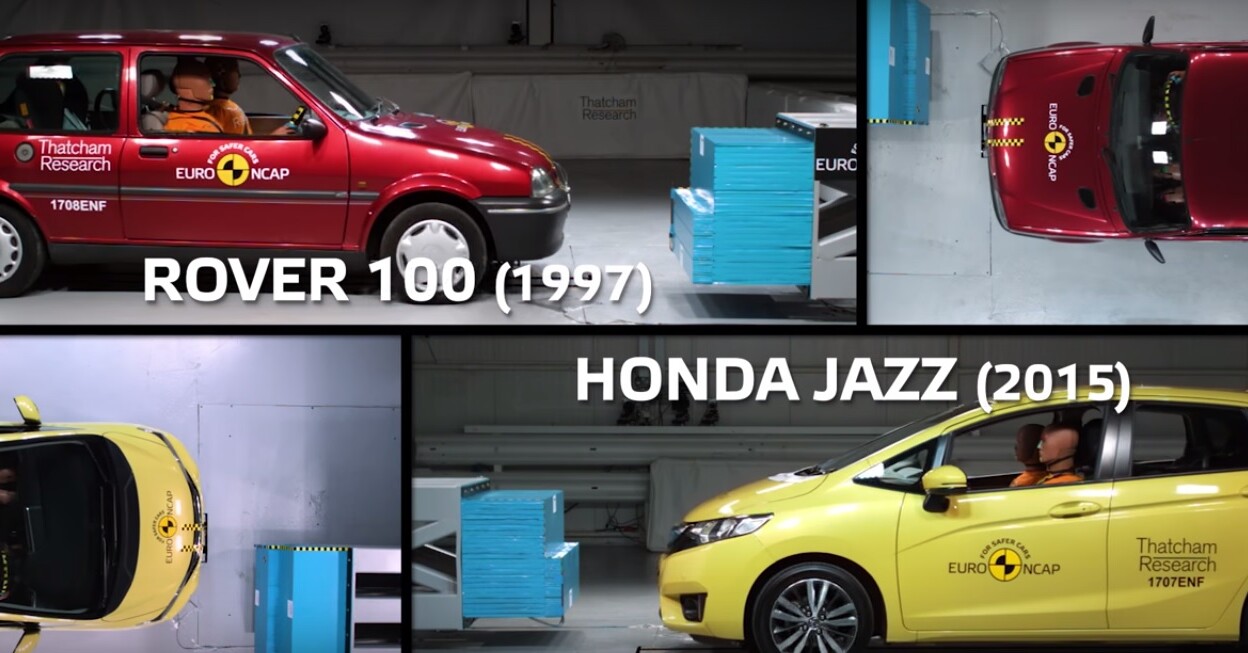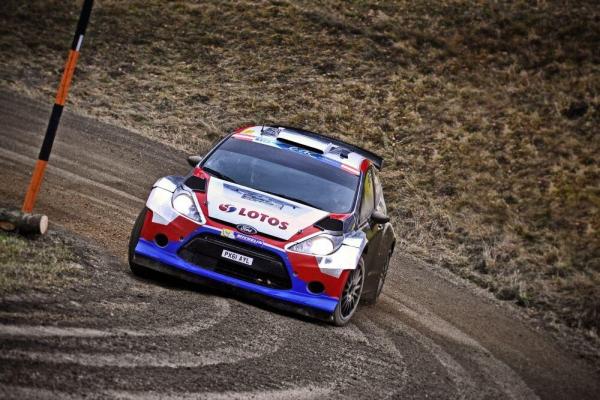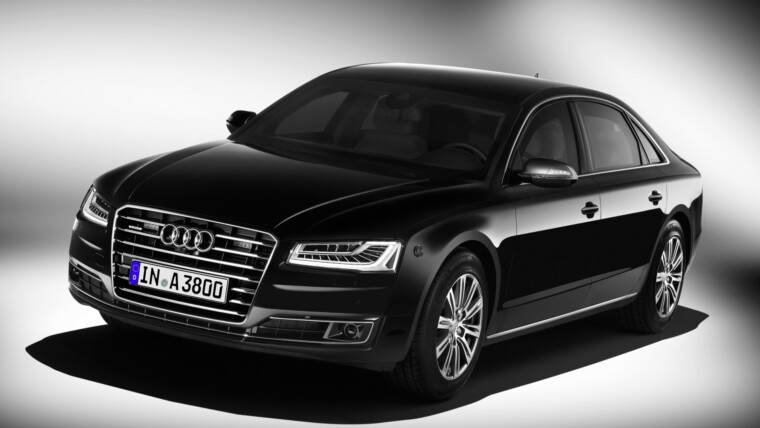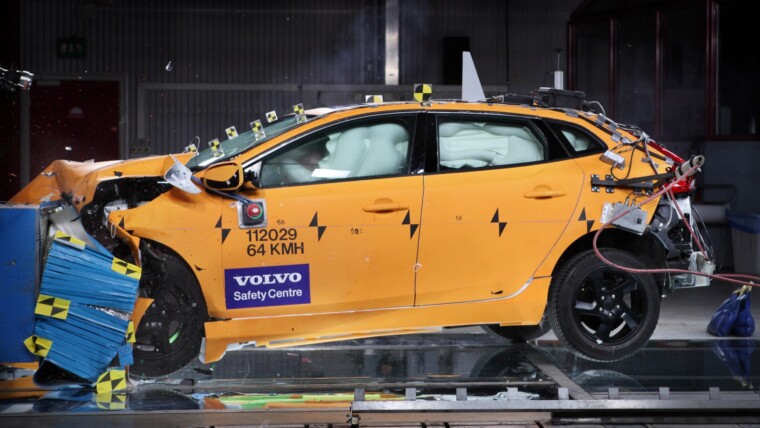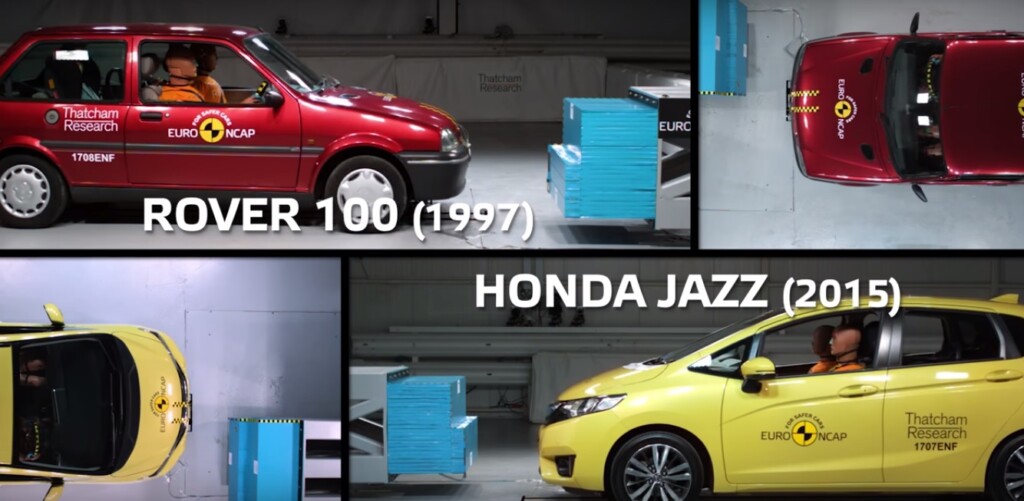
While driving an old car that still runs and requires minimum maintenance is much more cost effective, many don’t realize that buying a modern car could be far more economical than older ones, while also emitting far less CO2 and NOx emissions at the same time. Besides, modern day cars are much more practical and convenient for your daily needs like where most modern day cars now comes standard with automatic air conditioning, USB and Bluetooth connectivity, navigation systems, and etc.
However, there’s one important reason that modern cars have but the older ones lack of. It’s called safety. Not only modern cars have more airbags and safety systems, but they also have higher structural strength, better brakes, and clever emergency technologies.
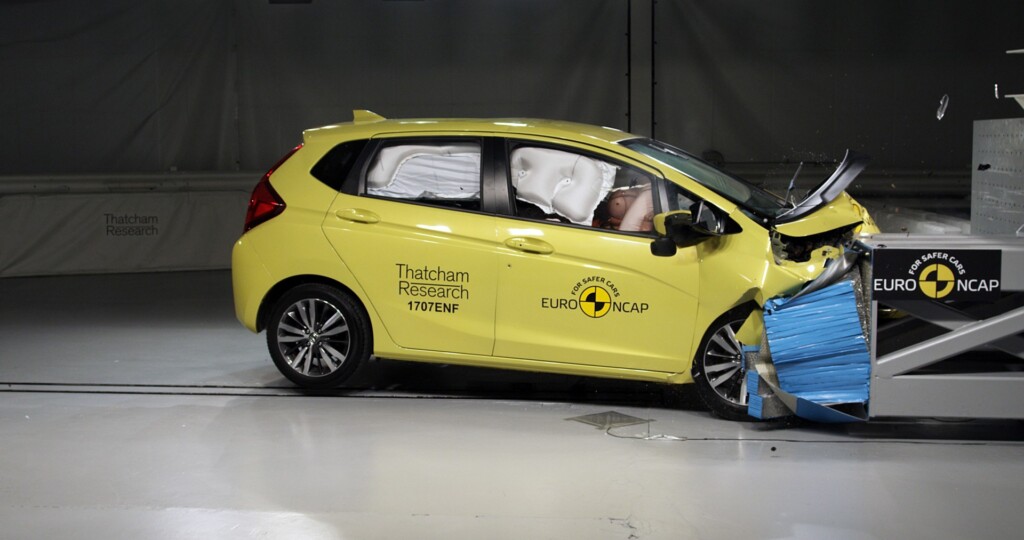
Crash test organisation like the Euro NCAP has played a big role in the safety evolution of vehicles as more than 78,000 lives have been saved since Euro NCAP’s crash safety tests were launched 20 years ago. Today, Euro NCAP reveals it has published over 630 safety ratings, crash-tested some 1,800 cars and collectively spent over 160 million Euro to make cars safer.
The first tests run by Euro NCAP exposed safety failings in top-selling family cars, forcing automakers to rethink the way vehicles were designed to prevent accidents and save lives. Today, the results of crash tests of two family cars built 20 years apart underline the huge advances in vehicle safety since 1997. Safety technologies that were non-existent or optional at most – such as driver and passenger airbags, side protection airbags, belt reminders and electronic stability control – are now standard on all cars sold in Europe.
To demonstrate, Euro NCAP has released a new video (below), showing the difference of crashworthiness between a late nineties Rover 100 and the recent Honda Jazz.
“We are very proud – as we mark 20 years at the forefront of road safety – that Euro NCAP’s programme of safety tests has achieved major, life-saving improvements in cars and has helped Europe reach the lowest road fatality rate for any region in the world.” said Secretary General, Michiel van Ratingen.
The first Euro NCAP crash test results were revealed on 4th February 1997. Until then, car makers only had to meet basic legislative crash test requirements for new cars, the results of which were not published. Back then it was impossible for consumers to compare the safety of one car with another.
Euro NCAP’s programme was the first time that realistic, like-for-like tests had been conducted in Europe by independent experts, and the results sparked outrage from consumer groups, members of the public and the media.
In the first round of tests, of 7 popular ‘supermini’ sized cars, the Ford Fiesta and Volkswagen Polo each achieved 3 stars out of the then-maximum of 4, based on protection levels offered to adult occupants.
The top-selling Rover 100 (pictured below) achieved only 1 star while the Fiat Punto, Nissan Micra, Vauxhall/Open Corsa and Renault Clio achieved only 2 stars. When pedestrian protection was assessed, not one vehicle scored more than 2 points, suggesting manufacturers were not designing cars with vulnerable road users in mind.
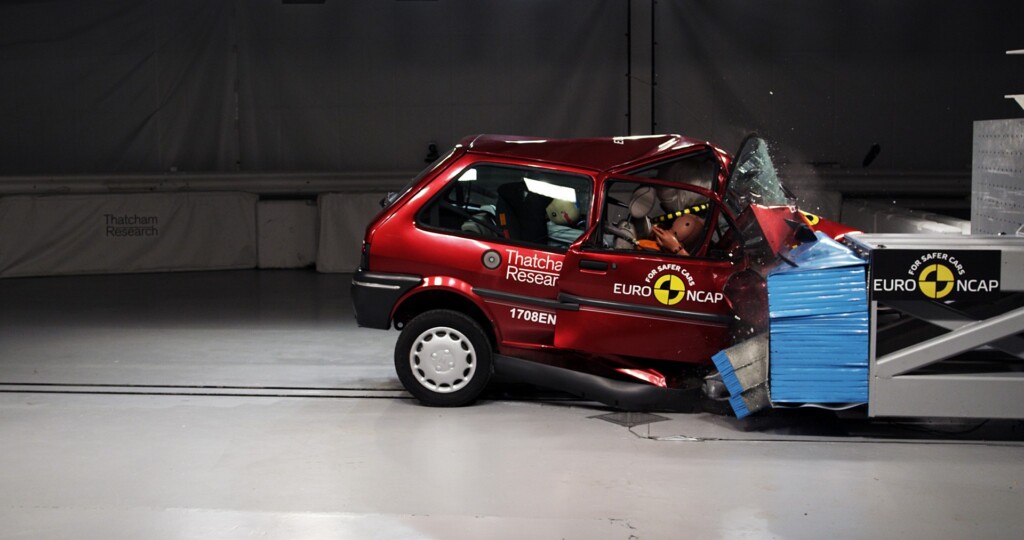
Leading car manufacturers attacked the tests, claiming they were so severe that it was ‘impossible’ for a car to achieve 4 stars. 5 months later, however, Volvo’s S40 became the first 4-star car for occupant protection.
Max Mosley, the first Chairman of Euro NCAP and Chairman of Global NCAP said, “Twenty years on from what started as a controversial programme, rejected by manufacturers, and supposedly aiming for unrealistic safety standards, Euro NCAP is now firmly part of the automotive mainstream. Thousands of fatalities have been prevented, consumer demand for safety is high, manufacturers compete on safety rating results, and vehicle safety standards continue to improve.”
“The consumer awareness model deployed so effectively by Euro NCAP has not just fundamentally changed the European market, it has helped to catalyse other NCAPs across the world in middle and low income countries. Consumer pressure informed by crash tests is helping to make rapid changes in levels of safety in India, Latin America and the ASEAN region. Euro NCAP has truly had a global impact, a proud road safety legacy that has saved countless lives,” he added.
Euro NCAP President and Thatcham Chief Technical Officer, Andrew Miller said, “The impact of these tests cannot be overstated. Until Euro NCAP, consumers only had the manufacturers’ word for it. Now we have the safest cars ever and the safety levels of each car are there for all to see. This success could only be achieved by actively working together in Europe under one umbrella and by continuing to invest in better safety.”
Other posts by AF Newsdesk

